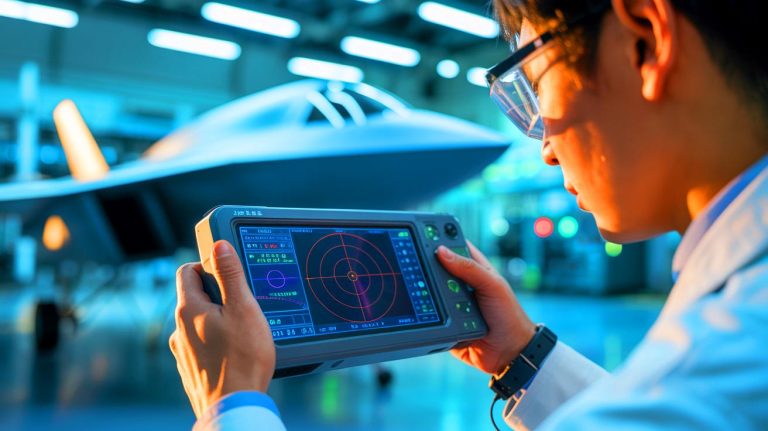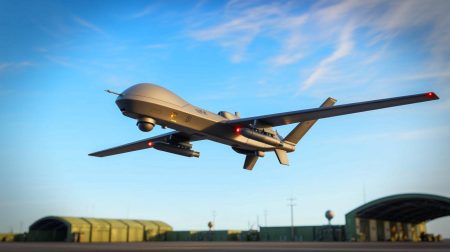| IN A NUTSHELL |
|
In a groundbreaking development, Chinese researchers claim to have created a device that can detect U.S. stealth aircraft, a feat that could shift the balance in military technology. This device, reportedly built from commercially available technology, can allegedly pinpoint emissions from U.S. low-probability-of-intercept radar (LPIR). LPIR is a vital component of American stealth aircraft such as the F-35 Lightning II and the F-22 Raptor, designed to remain undetected by emitting weak signals. The implications of this new capability are profound, suggesting that low-cost technology could undermine sophisticated military systems.
Understanding Low-Probability-of-Intercept Radar
The backbone of modern U.S. stealth technology, LPIR is an advanced radar system designed to avoid detection. It achieves this by emitting signals that are weak and difficult to intercept. Unlike traditional radar systems, which broadcast strong, easily detectable signals, LPIR uses a combination of frequency hopping, noise-like waveforms, and adaptive power control. This allows U.S. military platforms to detect enemy systems while remaining undetected themselves. Imagine trying to eavesdrop in a room full of shouting people while whispering in a secret language—this metaphor aptly describes the stealthy nature of LPIR.
However, despite its sophistication, LPIR is not entirely foolproof. Current technologies, such as high-resolution wideband receivers and advanced signal analysis algorithms, have the potential to detect these elusive signals. Moreover, longer observation times and artificial intelligence tools can further enhance detection capabilities. This makes the development of new countermeasures an ever-evolving battle between stealth technology and detection systems.
Defeating Stealth on a Budget
Chinese researchers at the 38th Research Institute of China Electronics Technology Group Corporation have reportedly developed a method to detect LPIR emissions using spectrum analyzers. These devices, typically used in telecommunications, are repurposed to detect stealth signals, offering a cost-effective solution. One such device, the TFN RMT744A, is classified as civilian telecom equipment but exhibits military-grade sensor capabilities in field tests. This development highlights the potential for commercially available technology to be adapted for military purposes, significantly lowering the cost barrier for sophisticated detection systems.
The device reportedly locates the source of emissions within 0.4-0.5 inches, even amidst active jamming. While technical specifics remain undisclosed, it is speculated that the device employs advanced signal processing and machine learning. By overcoming LPIR’s anti-detection techniques, such as rapid frequency hopping, this device could change the landscape of electronic warfare, making it more accessible and affordable.
Levelling the Playing Field
If the claims about this new detection device hold true, it could dramatically alter the strategic advantage currently enjoyed by U.S. stealth technology. An adversary’s ability to detect radar emissions could enable tracking and targeting of stealth assets, leveling the playing field in electronic warfare. This is particularly significant in high-tech conflicts in regions like the South China Sea or the Taiwan Strait, where technological superiority is crucial.
The emergence of such technology also raises questions about the future of stealth strategies. As detection capabilities become more affordable and sophisticated, the cost-benefit analysis of investing in stealth systems may shift. Nations heavily reliant on radar stealth might need to rethink their military doctrines, invest in new countermeasures, or explore alternative strategies for survival. This development underscores the need for continual innovation in military technology to maintain a strategic edge.
The Broader Implications for Global Military Dynamics
This development highlights the growing trend of utilizing commercially available technology for military applications. The repurposing of civilian gear for military use demonstrates how technological advancements can blur the lines between civilian and military domains. As electronic countermeasures become more accessible, nations may increasingly turn to off-the-shelf technology to gain an edge in military conflicts.
The potential impact on global military dynamics is significant. As detection technology becomes more widespread, nations may be forced to reconsider their reliance on stealth systems. This could lead to a shift in military strategies, with countries exploring new ways to maintain superiority in an ever-evolving technological landscape. The race for technological advancement in military applications is likely to intensify, with nations striving to outpace each other in developing cutting-edge solutions.
The emergence of this detection device raises a fundamental question: how will nations adapt their military strategies in response to advancements in detection technology? As the landscape of electronic warfare continues to evolve, the answers to this question will shape the future of global military dynamics and the balance of power in international relations.
Did you like it? 4.6/5 (30)








Wow, this could totally change the game in military tech! 💥
Funny how an “educated journalist” believes this stuff. As a Veteran who worked on both the F22 and the F35 stealth platforms this is pure propaganda. There is far more to stealth technology than LPIR system. Think about this, and F35 stealth has proven to be capable of a precise strike from over 100 miles away. So to say China has a “handheld device” that detects stealth emissions is a complete joke.
Isn’t it ironic that civilian tech is now countering military tech? 🤔
How reliable are these claims? Seems like a massive leap.
It’s completely bs
Does this mean the U.S. will need to rethink its stealth strategies?
This isn’t stealth detection, it’s radiation detection. All the stealth jet has to do is go passive. The Chinese like to come out claiming they can defeat stealth every couple of years.
If you want to know what tech the Chinese have access to, look at the rest of the world, especially countries that don’t prioritize cyber security.
This feels like a game of cat and mouse with tech advancements.
More lies from China.
Bingo, their propaganda machine is relentless but also kinda amusing once you realize it’s all BS.
The level of innovation in repurposing tech is both fascinating and terrifying.
I call BS! The Chinese claim all kinds of crap and it’s always a lie. Their military equipment is cheap knock offs of garbage Russian equipment. If China had attacked Ukraine, China would have been crippled in a month.
Is this device already operational or still in testing phases?
How do other nations feel about this development?
Stealth aircrafts were so yesterday, I guess. 😜
Could this tech be used for peaceful purposes as well?
Always something new in the tech world! Keep us updated.
How much does this device cost to produce?
Thank you for sharing this eye-opening article!
Imagine the implications for global military dynamics! 🌍
This development could spark a new arms race in detection tech.
Do these claims have any independent verification yet?
Looks like we need to redefine what “stealth” means now.
U.S. stealth aircrafts are not so stealthy anymore?
I’m skeptical. Sounds too good to be true. 🤨
How does this affect the strategic balance in the South China Sea?
What will be the next step for U.S. military tech?
Thank you for the informative read, very insightful!
Could this lead to more affordable military tech worldwide?
Were there previous attempts at such a detection device?
The future of military tech is indeed unpredictable.
Are there any potential drawbacks to using such detection technology?
What kind of commercially available tech are they using exactly?
Can’t believe there are commenters that actually believe this B.S….LOL
Seems like a plot straight out of a spy movie! 🎬
Are there any potential countermeasures to this new detection device?
More Chinese lies.
China Lies!
How did they train the system AI on their aircraft radar system or those of the US? What’s the range of the device? How much does its accuracy decrease with distance? Can it locate the aircrafts radar signature from 200 km+? What happens if the aircraft fires a radar seeking missile then goes dark to draw out a fire control radar system? If it has a limited range it doesn’t help much. The issue is at what range can it provide accurate targeting information and how it can transmit it to fire control systems. If the enemy can target an fire in stealth from outside the system range and the missiles are stealth and use guidance that this can’t track, it doesn’t actually help except in close range situations.